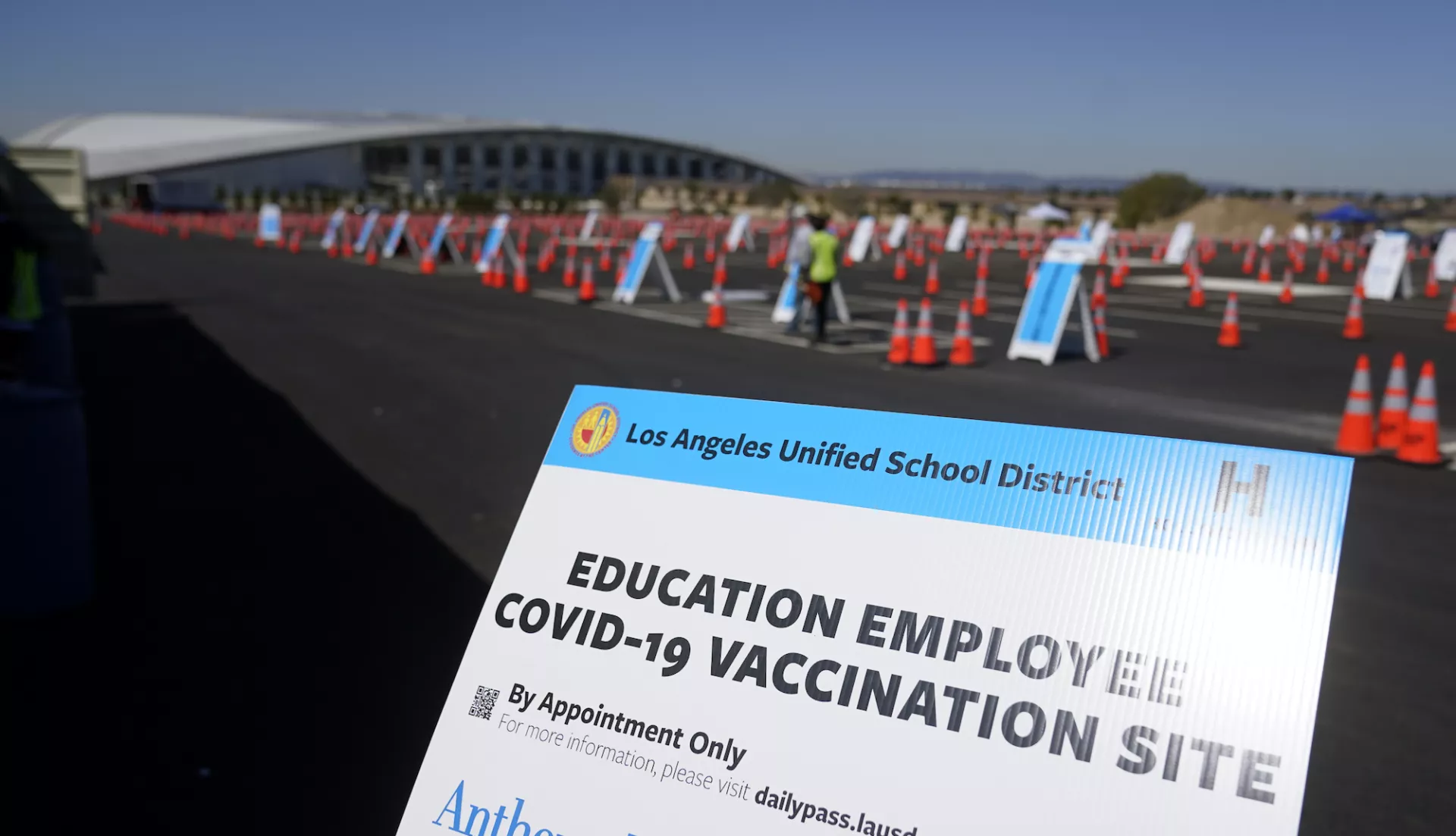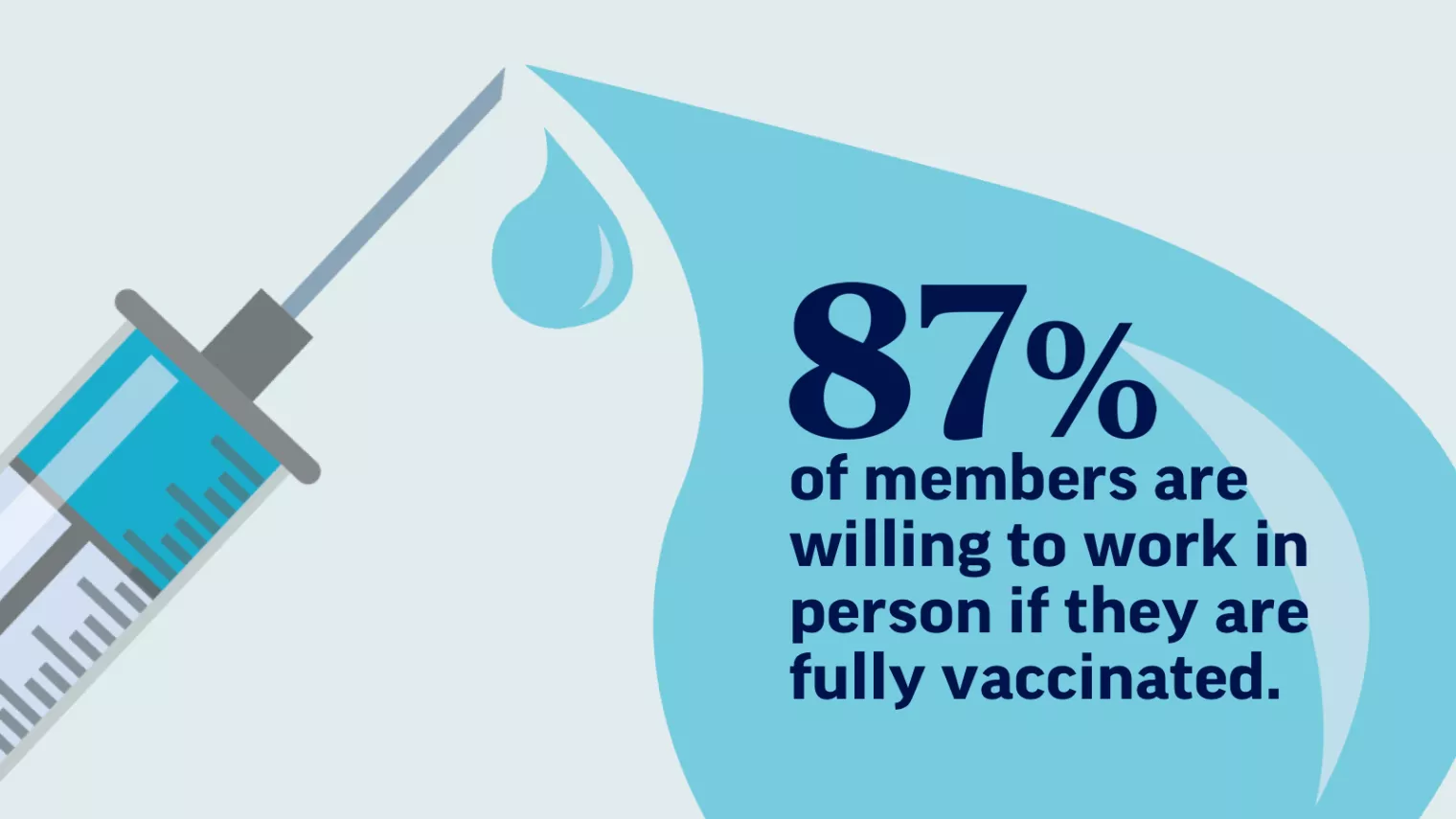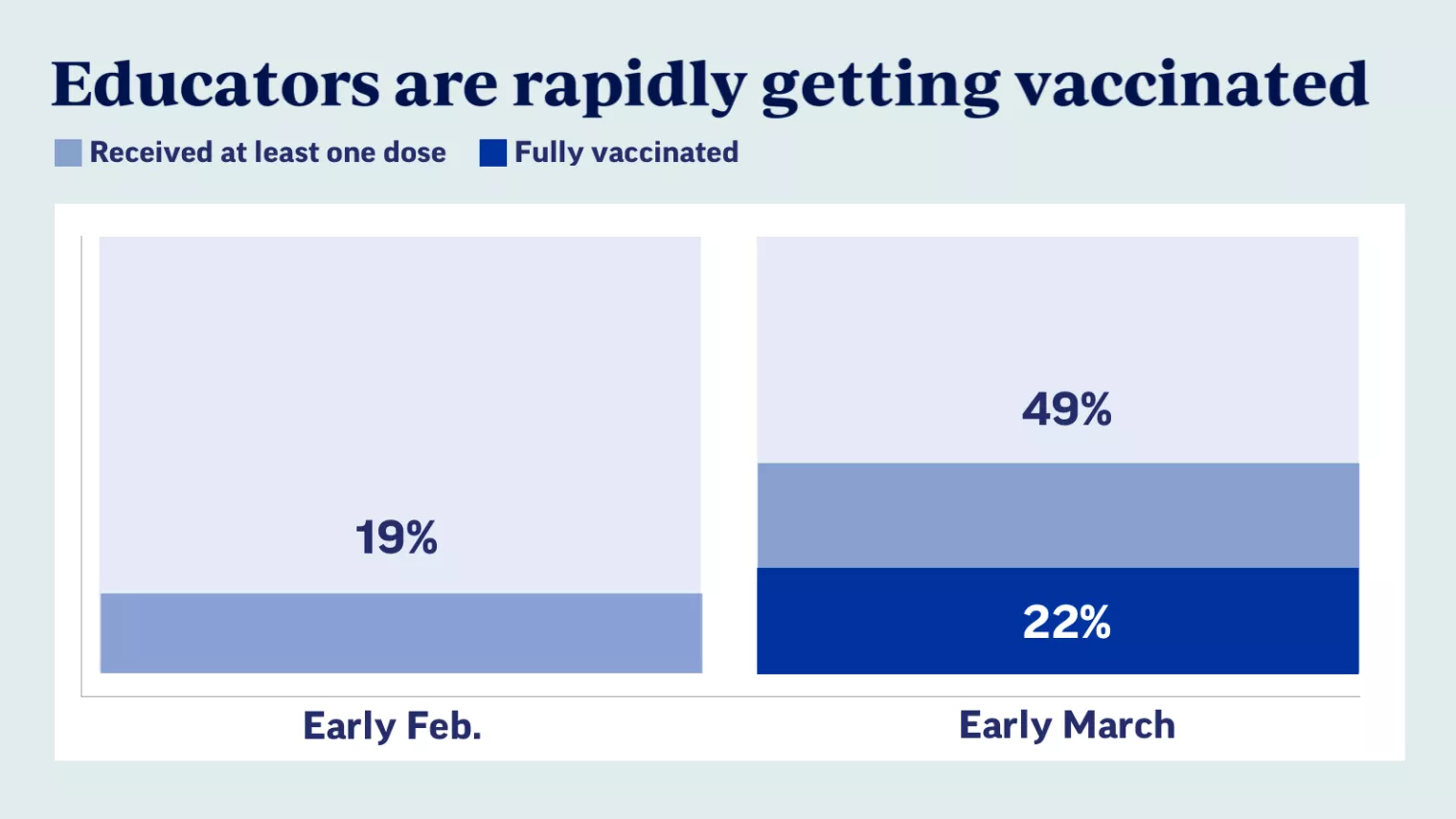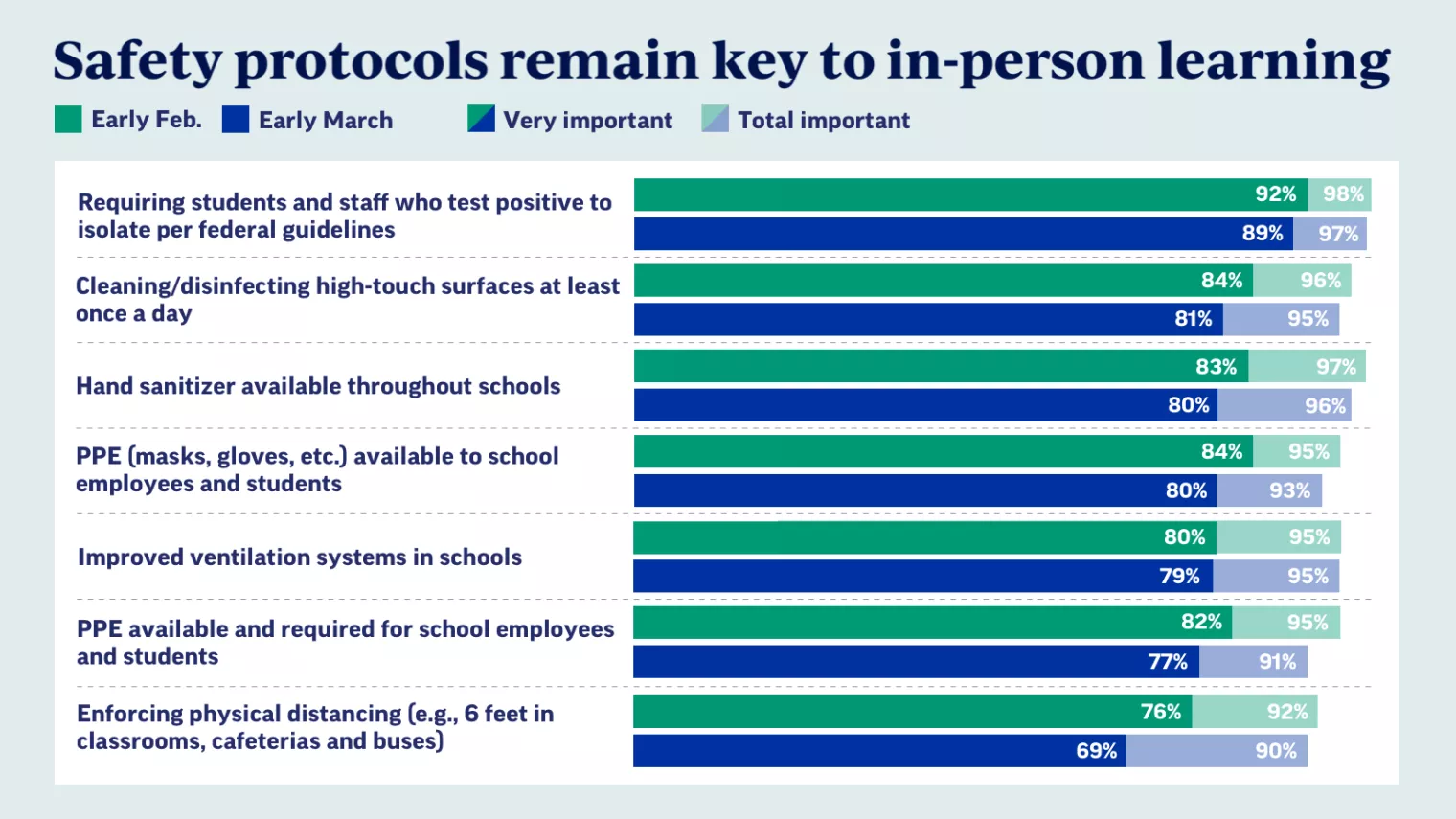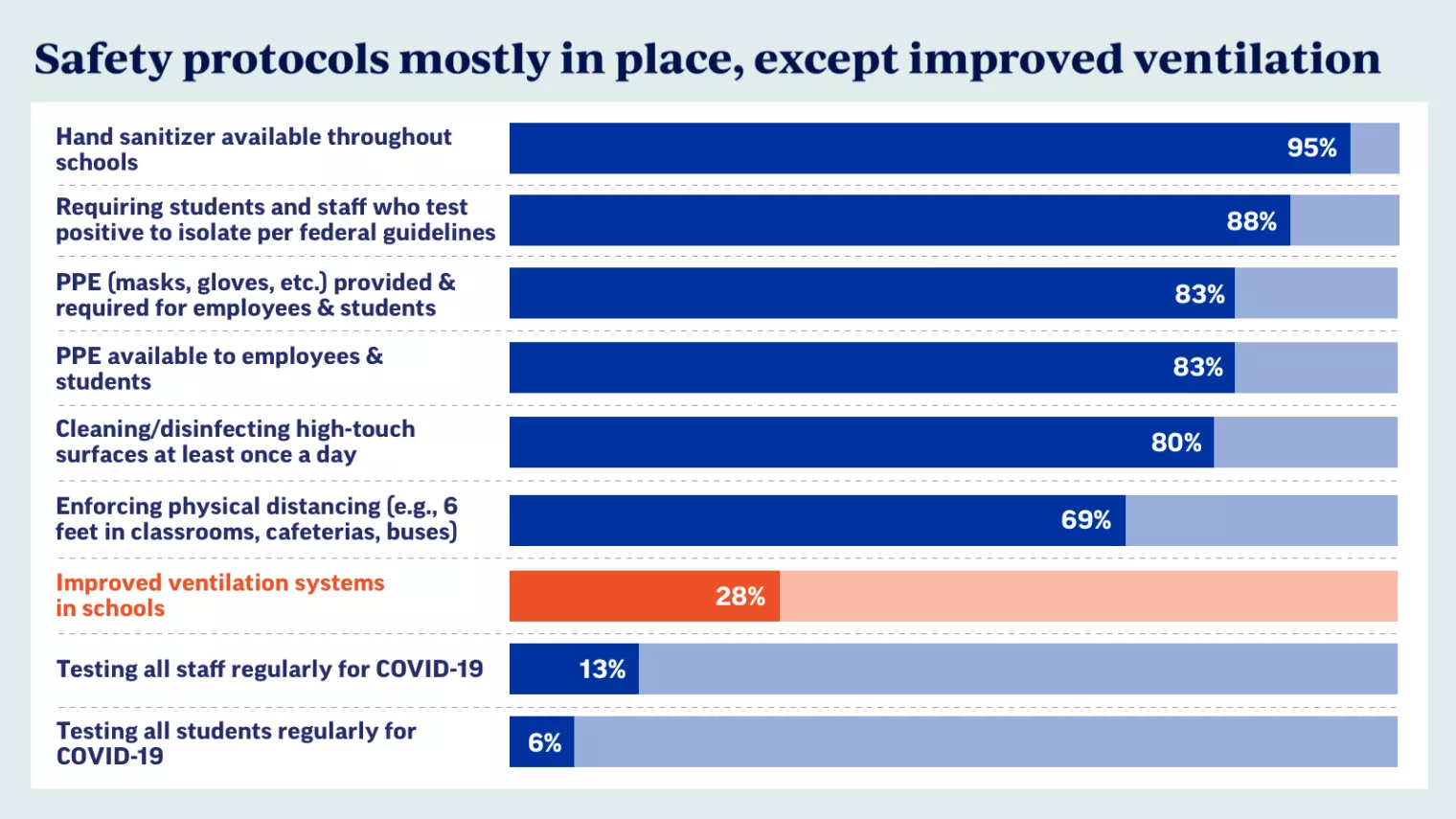Key Takeaways
- A NEA survey shows a massive increase in the number of members who have been vaccinated since early February.
- The overwhelming majority of NEA members - 87 percent - are willing to work in-person if they are fully vaccinated.
- While the vaccinations are essential, they are just one part of the solution to reopen and operate schools safely.
In early February, the National Education Association (NEA) surveyed its members and found that only 1 in 5 (19 percent) had been vaccinated, and only 17 percent had scheduled an appointment to receive one. Despite widespread support for prioritizing the nation's educators for vaccination, very few states had taken this step. According to the same poll, 70 percent said they would feel safer about working -in-person as a result of the vaccine.
One month later, a new NEA survey shows the pace of educator vaccinations is accelerating.
The poll of 3,000 members found that nearly half (49 percent) have received at least one dose of the COVID-19 vaccine, a huge increase over the 19 percent reported in February. An additional 36 percent have scheduled, or intend to schedule, their vaccination. According to the poll, 87 percent are willing to work in-person if they are fully vaccinated.
Respondents also encountered less obstacles in the scheduling process. Among those who have been vaccinated or plan to be, 61 percent said they had some difficulty with scheduling compared to 67 percent in January's survey. And the percentage of members who found it very difficult to schedule their shot declined from 46 to 34 percent.
When the FDA approved the Pfizer and Moderna vaccines in December 2020, NEA called on state leaders and the Centers for Disease Control and Prevention (CDC) to prioritize educators. Everyone wanted to return to in-person learning, but only when it was safe to do so. Vaccinating the nation's 5 million educators would help make that happen. President Biden listened and announced in early March that he was directing states to prioritize school staff.
NEA Member Survey on Vaccinations and Safety Protocols: Highlights
Pennsylvania began rolling out its educator vaccination program at this time, and quickly reached a major milestone. As of March 24, the state had vaccinated 102,000 school staff. "The Pennsylvania State Education Association (PSEA )has been advocating for this kind of approach for the past six weeks, and we are very pleased that state leaders have listened and have taken swift action to put this plan in motion," said PSEA President Rich Askey.
While vaccinating educators should continue to be a top priority, school safety depends on a host of other safety protocols. - updated ventilation systems, adequate supply of PPE, mask-wearing and social distancing, and a system of testing, tracing, and quarantining.
According to the NEA survey, only 28 percent of NEA members whose school buildings are open have improved ventilation systems. That number falls to 24 percent in high poverty schools. A 2020 report by the General Accounting Office found that 53 percent of the nation's schools need to upgrade or replace multiple building systems, including HVAC.
In addition, 76 percent of educators’ schools have faculty currently working in school buildings all or part of the time, underscoring the urgency of addressing these deficits.
"With many of our school buildings across the nation already back to some form of in-person learning, we must remain vigilant if we are to ensure safe and just learning environments for all students and educators," said NEA President Becky Pringle.
With its dedicated $170 billion in public education funding, The American Rescue Plan Act, passed by Congress earlier this month, is a "vital and comprehensive response," Pringle said, to help schools reopen and operate safely.
More help could be on the way.
During his press conference on March 25, President Biden previewed his soon-to-be unveiled comprehensive infrastructure proposal, which is expected to provide $100 billion in schools and education infrastructure.
"There’s so much we can do," Biden said. "Look at all of the schools in America...How many schools where the kids can’t drink the water out of the fountain? How many schools are still in the position where there’s asbestos? How many schools in America we’re sending our kids to don’t have adequate ventilation? "
